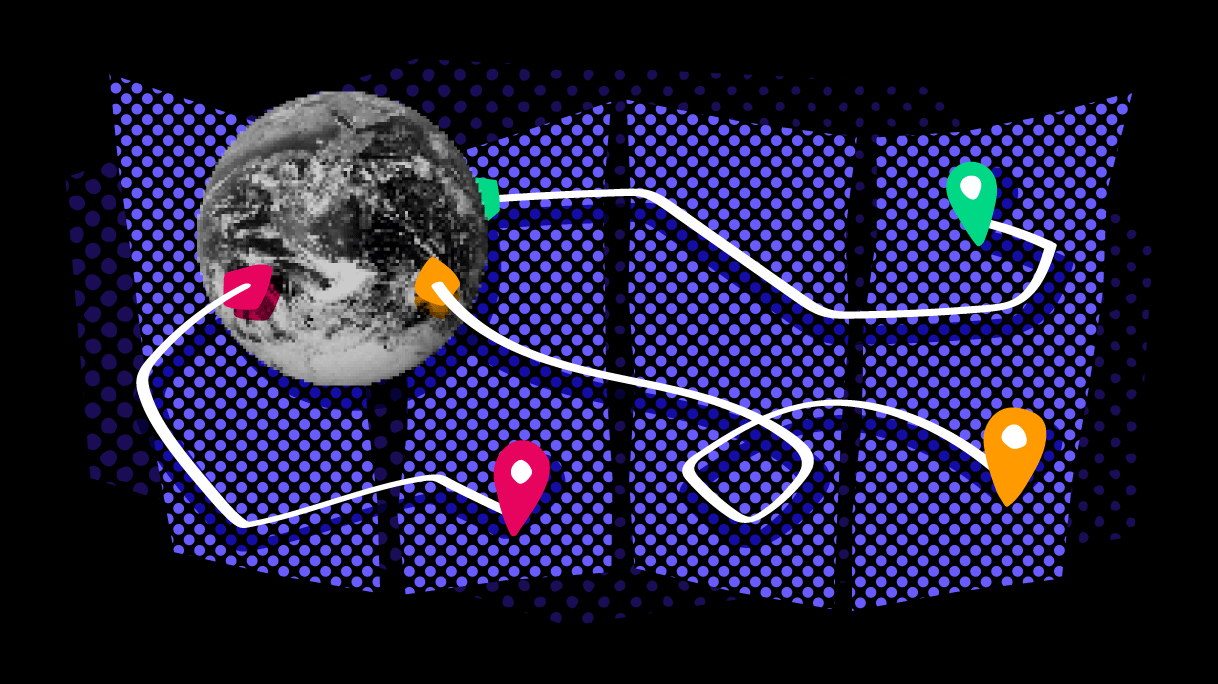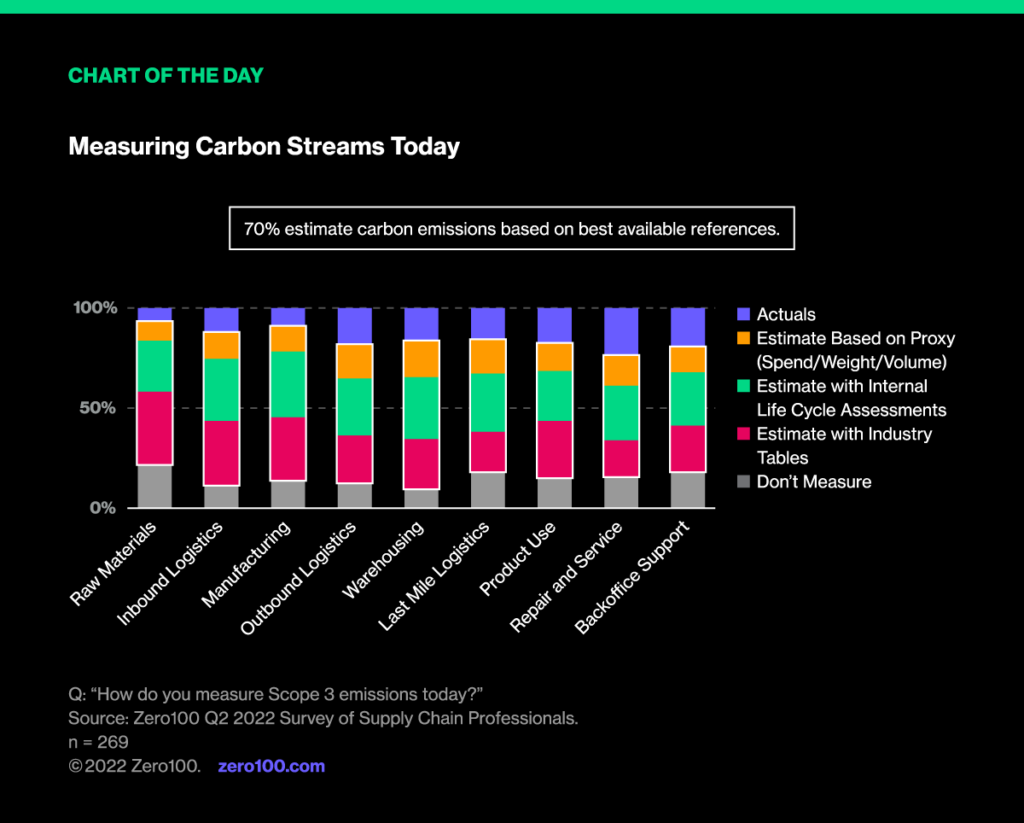
New Research: Carbon Stream Mapping
Today, 70% of reported carbon emissions from supply chains are based on estimates. While organizations work to overcome measurement challenges, how do we accelerate from better accounting to meaningful action?
Point of View
Zero100's Point of View reports explore a specific topic aligned to one of three primary megatrends impacting supply chain, including the digitization of operations (DIGITAL), growing accountability for environmental and social impact (ESG), as well as the organization and development of talent required to effectively respond to new challenges (PEOPLE).
Each publication is structured to quickly orient the reader, define critical questions, review our key findings, and explore the implications of our data analysis, survey insights, or interviews with practitioners. In combination, these perspectives provide the body of evidence and conceptional frameworks required to tackle persistent and growing operational challenges.
Our latest report focuses on ESG: Carbon Stream Mapping.
Mapping Our Carbon Flows
As we aim to become a zero carbon community, a natural question arises: How do we know when we've gotten there?
Today, the measurement systems available for following carbon flows through our operations vary in methodology and reporting requirements. This results in multiple reporting requirements and data feeds per platform and geography. It also causes those supply chains who lead in transparent reporting to look like they are emitting more carbon than others.
For sustainability professionals who can rattle off Scope 3 subcategories like they're SAP T-codes, the existing reporting options bring the frustration of multiple, slightly differing reporting requirements. For supply chain professionals less familiar with the ins and outs of scopes and protocols, a familiar framework is needed to anchor our thinking and collective action. And for CSCOs and their teams tasked with eliminating carbon from operations – often contributing more than 90% of their organization's emissions – a unified supply chain approach is required, with a strong side of change management.
Today, 70% of reported carbon emissions from supply chains are based on estimates (see graph below). Alongside these estimates, we hear consistently:
- How should I think about carbon reporting?
- Where should we focus our attention to take meaningful actions?
- How do I lower the risk of reporting apples-to-oranges across different reporting bodies compared to my peers?
We explore these questions and ask one more: Are we too focused on reporting?

From Accounting to Action
Take the next step by leveraging a pareto approach to focus a cross-org team on reducing your operation's largest source of carbon.
Unsure of your supply chain emissions? Benchmark against peers in your industry and assume your emissions are generally similar. Review CDP carbon analysis reports as a starting point.
Wondering how best to use your team's time? Form a cross-organizational working group to focus on the highest carbon emitting function rather than the temptation to create by-function siloed teams.
Ready to report? In Zero100's latest survey of supply chain professionals, we found that supply chains with public commitments are nearly twice as likely to have a net zero goal of 2030 rather than 2050.
Community Resources:
A host of organizations have emerged to help organizations identify and calculate emissions. Consider joining one to accelerate progress. Examples include:
Set Carbon Targets: SME Climate Hub brings together supply chain leaders to: (1) reduce GHG emissions to achieve the 1.5 degree ambition, (2) work with partners to halve emissions by 2030 and reach net-zero by 2050, and (3) support suppliers with resources.
Reduce Carbon Emissions: The WBCSD Incentivizing Supply Chain Decarbonization working group aims to identify and remove barriers to operating low-carbon supply chains. They group activities by: (1) building capacity, (2) leveraging procurement, (3) enforcing performance, and (4) rewarding progress.
Prepare for Regulation: The EU Carbon Border Adjustment Mechanism aims to reduce carbon leakage with a reporting system beginning in 2023 with financial adjustments rolling out in 2026.
Note:The gated version of the report is available to all members of the Zero100 Community through their sign-in credentials.
Coming Next: DIGITAL: Trending Supply Chain Terminology